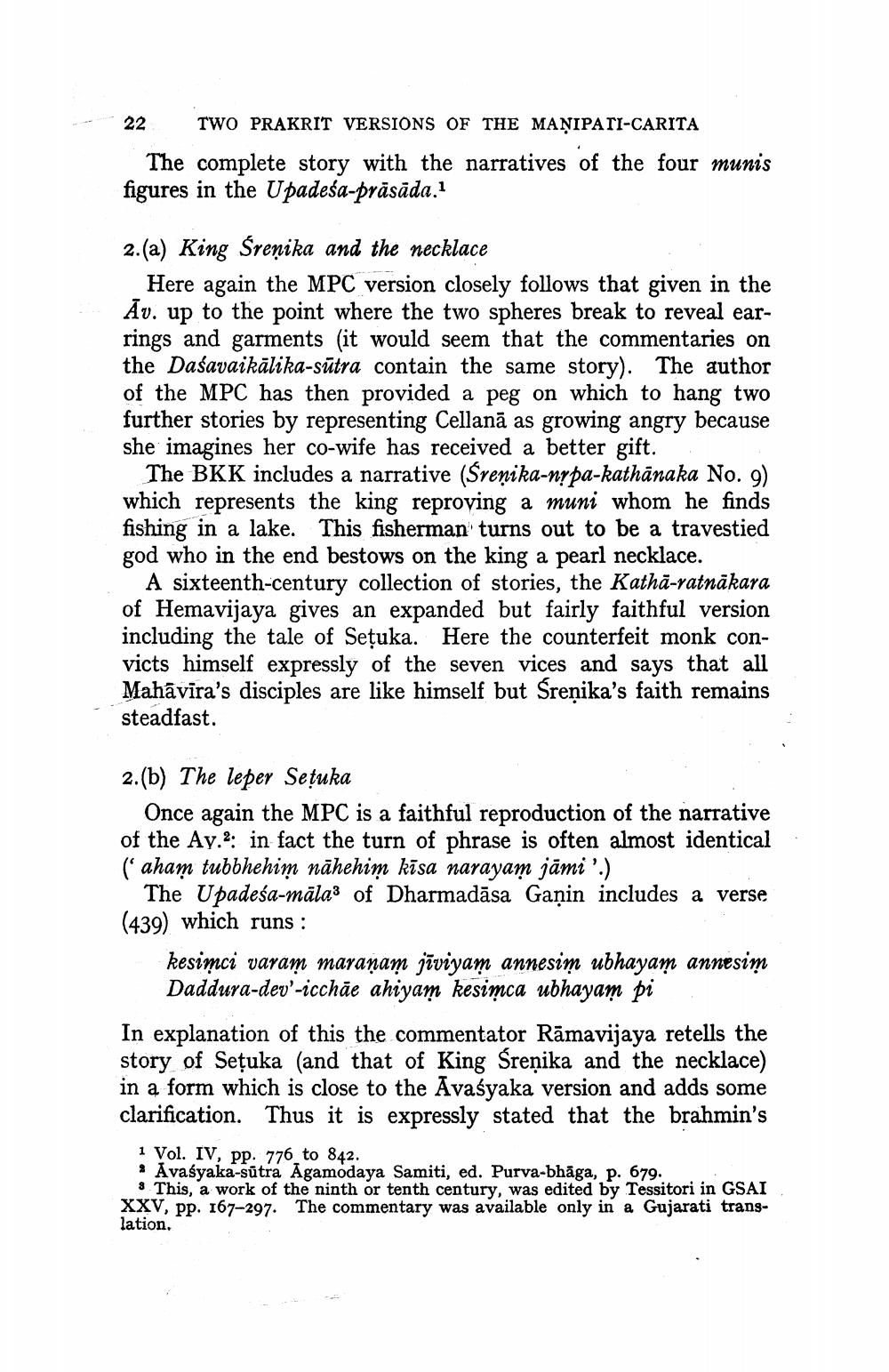________________
22
TWO PRAKRIT VERSIONS OF THE MANIPATI-CARITA
The complete story with the narratives of the four munis figures in the Upadesa-prāsāda.1
2. (a) King Śrenika and the necklace
Here again the MPC version closely follows that given in the Av. up to the point where the two spheres break to reveal earrings and garments (it would seem that the commentaries on the Daśavaikālika-sūtra contain the same story). The author of the MPC has then provided a peg on which to hang two further stories by representing Cellana as growing angry because she imagines her co-wife has received a better gift.
The BKK includes a narrative (Śreṇika-nṛpa-kathānaka No. 9) which represents the king reproving a muni whom he finds fishing in a lake. This fisherman turns out to be a travestied god who in the end bestows on the king a pearl necklace.
A sixteenth-century collection of stories, the Katha-ratnākara of Hemavijaya gives an expanded but fairly faithful version including the tale of Sețuka. Here the counterfeit monk convicts himself expressly of the seven vices and says that all Mahavira's disciples are like himself but Śreņika's faith remains
steadfast.
2.(b) The leper Seṭuka
Once again the MPC is a faithful reproduction of the narrative of the Ay.2: in fact the turn of phrase is often almost identical ('aham tubbhehim nāhehim kīsa narayam jāmi '.)
The Upadesa-māla3 of Dharmadāsa Gaṇin includes a verse (439) which runs :
kesimci varam maraṇam jīviyam annesim ubhayam annesim Daddura-dev'-icchae ahiyam kesimca ubhayam pi
In explanation of this the commentator Rāmavijaya retells the story of Sețuka (and that of King Śreņika and the necklace) in a form which is close to the Avaśyaka version and adds some clarification. Thus it is expressly stated that the brahmin's
1 Vol. IV, pp. 776 to 842.
Avaśyaka-sutra Agamodaya Samiti, ed. Purva-bhāga, p. 679.
This, a work of the ninth or tenth century, was edited by Tessitori in GSAI XXV, pp. 167-297. The commentary was available only in a Gujarati translation.




